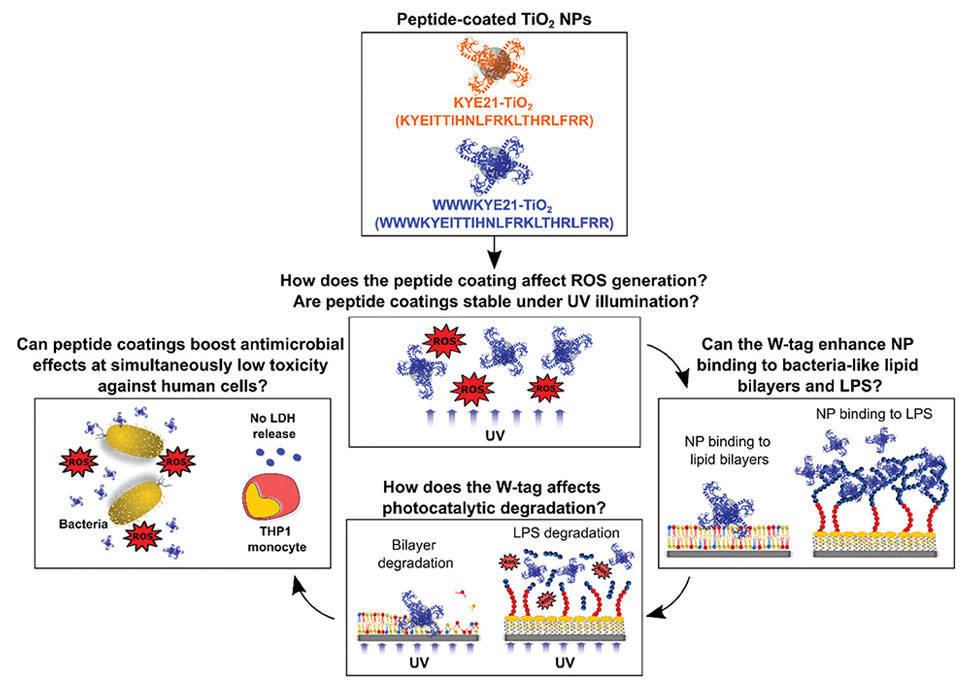Antimicrobial Peptides
Reflecting work in the Malmsten Lab
Published in Advanced Functional Materials, work by members of the Martin Malmsten group at the University of Lund, Sweden, explores the coating of photocatalytic nanoparticles with antimicrobial peptides, AMPs, for boosted antimicrobial effects, and how such effects depend on AMP properties.
For this, TiO2 nanoparticles are coated with the AMP KYE21 or its hydrophobically enhanced variant WWWKYE21. Mirroring effects of free peptides, coated nanoparticles displayed higher binding and UV-induced degradation for bacteria-like than for mammalian-like membranes. In addition, they degraded bacterial lipopolysaccharides, LPS. WWWKYE21-coated nanoparticles displayed higher binding to LPS and bacteria-like membranes and photocatalytic degradation, although saturation effects are found at high nanoparticle binding.
Neutron reflectometry showed that binding of peptide-coated nanoparticles to bacteria-like membranes resulted in partial lipid removal in the absence of UV, but that UV illumination caused additional degradation, featuring increases in the hydration of headgroup and acyl chain regions.
For LPS, UV induced removal of its outer O-antigen region. Analogous to findings in model systems, antimicrobial effects of peptide-coated nanoparticles against Escherichia coli bacteria on illumination are pronounced, while toxicity against human monocytes remained low.
Altogether, results show that AMP coating boosts the antimicrobial effects of photocatalytic nanoparticles without causing cell toxicity. From a broader perspective, the study points to the potential of nanoarchitectonic combination of component properties for the design of composite NP properties.


